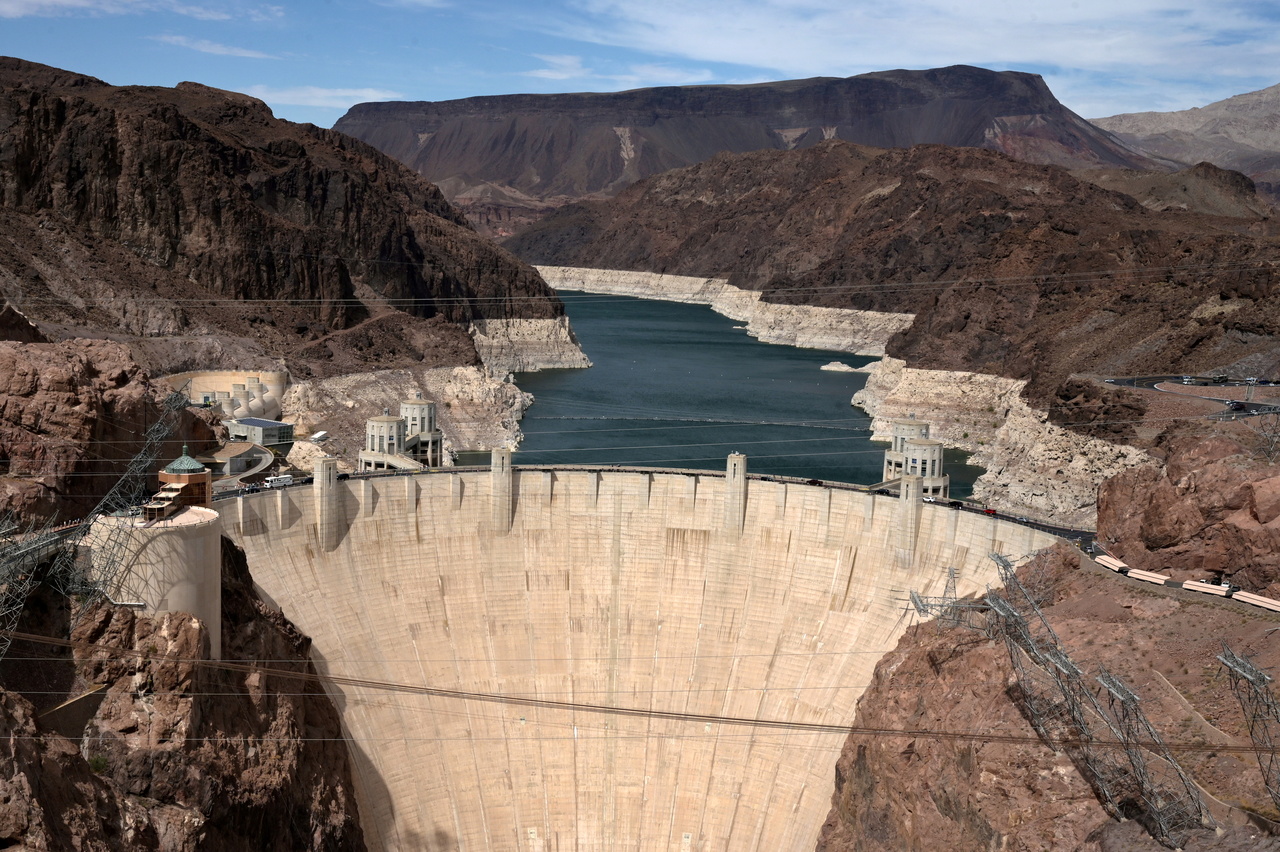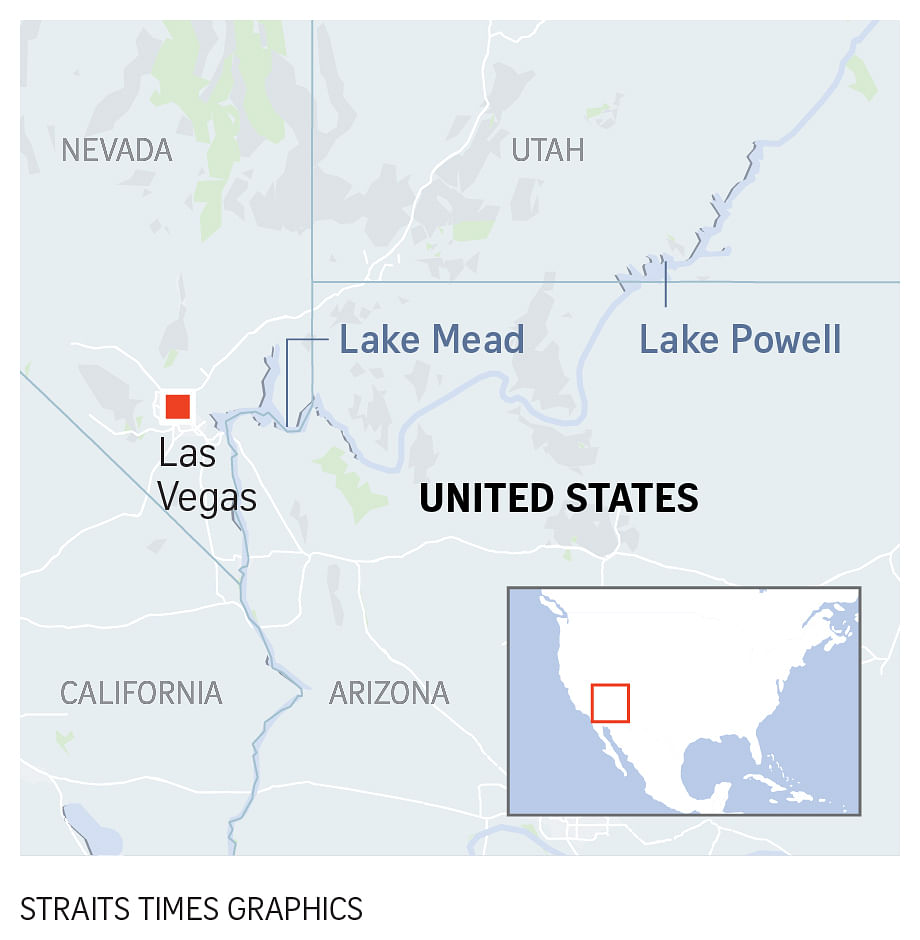US declares first Western reservoir water shortage, triggering cuts
Sign up now: Get ST's newsletters delivered to your inbox

Low water levels due to drought are seen in the Hoover Dam reservoir of Lake Mead near Las Vegas on June 9, 2021.
PHOTO: REUTERS
Follow topic:
WASHINGTON (REUTERS) - United States officials for the first time on Monday (Aug 16) issued an official water shortage declaration for the massive Western reservoir of Lake Mead, triggering supply cuts to parts of the drought-stricken southwest.
The shortage will reduce water apportionments to Arizona, Nevada and Mexico for the year beginning in October, the US Bureau of Reclamation said in a statement.
Arizona will lose 18 per cent of its annual apportionment, while Nevada will see cuts of 7 per cent. Apportionments to Mexico, which are required under a 1944 treaty, will be cut by 5 per cent.
Separately, 10 Western governors urged President Joe Biden to declare a federal drought disaster in their states, qualifying farmers and ranchers to seek special assistance "beyond what is available through existing emergency programmes".
"Historic drought levels threaten to eliminate entire crops, depress yields and harbor extreme levels of pests and disease that add to the cumulative loss," the governors wrote in a letter.
While not a surprise, the cuts will mean less water - and tough allotment decisions - for farms, cities and tribes in the parched region, which is in its 22nd year of drought.
"We are seeing the effects of climate change," Ms Tanya Trujillo, the Interior Department's assistant secretary for water and science, said during an online press conference. She pointed to the region's lower-than-average snowpack, scorching temperatures and dry soil conditions.
"Unfortunately that trend may continue," Ms Trujillo said.
Lake Mead, formed in the 1930s from the damming of the Colorado River at the Nevada-Arizona border, is the largest reservoir in the United States. It is crucial to the water supply of 25 million people in the cities of Los Angeles, San Diego, Phoenix, Tucson and Las Vegas.
Crippling drought in the US West has brought Lake Mead and Lake Powell, the nation's second-biggest reservoir, to historic lows. Total water storage in the Colorado River system is at 40 per cent of capacity, down from 49 per cent a year ago, the bureau said.
Water releases in a given year are determined by an annual study anticipating the reservoirs' water levels in winter. In January, Lake Mead is expected to be at 324.9m above sea level, which is 2.7m below the official trigger for a shortage.
The reservoir's elevation is projected to keep falling, the agency said. By July of 2023, it is estimated to be at 316.3m. Arizona, California and Nevada are mulling actions needed to prevent the reservoir from going below 311m, officials said.
Last month, an emergency drought agreement prompted the release of 181,000-acre feet of water from smaller Western storage reservoirs to boost the elevation of Lake Powell.


